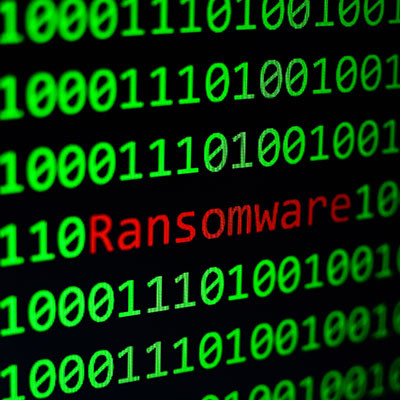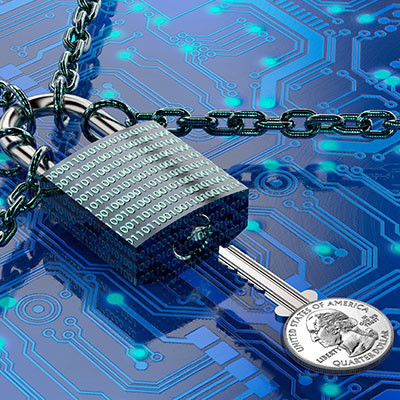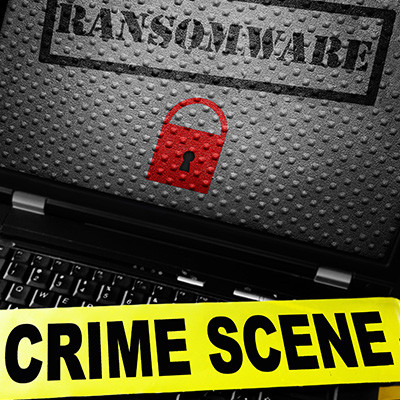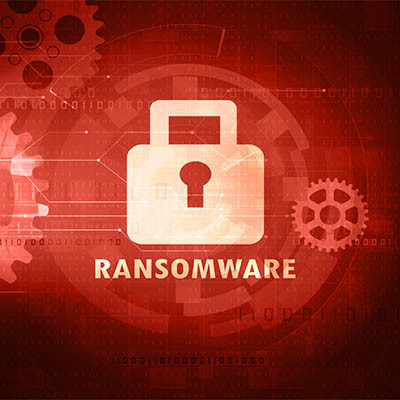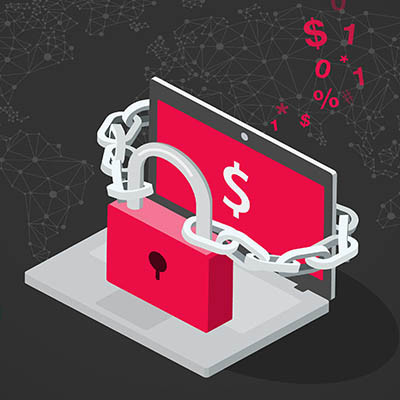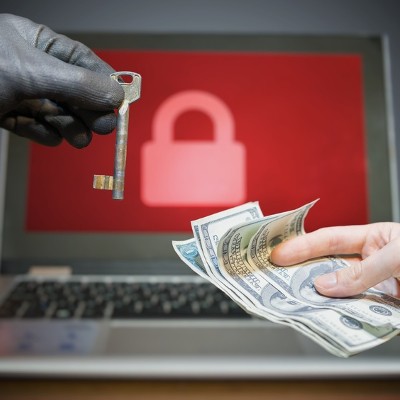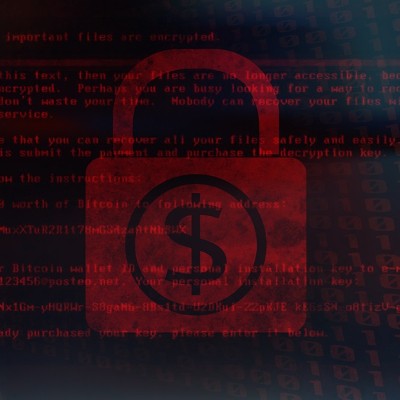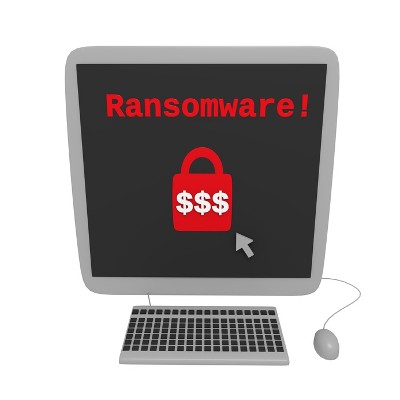k_Street Consulting, LLC Blog
Cyberthreats are increasingly sophisticated, and businesses have to do what they can to address these issues. Since cyberattacks can have a massively negative impact on your business, it stands to reason that you need a platform in place to enhance your employees’ awareness of Internet-based threats. This month we look at the top three IT security concerns businesses face and what should be done to confront them.
Like many of the past few years, this year has witnessed a significant surge in high-profile ransomware attacks. If you haven't already strategized how to safeguard your business from these threats, now is the time to act. Fortunately, you can take several proactive measures to mitigate the impact of ransomware attacks, and it all starts with preparation.
Cybercriminals are always looking for new ways to trick users and businesses into falling for their traps. With cyberthreats on the rise, and online risks becoming more detrimental to businesses, it’s definitely something that all businesses need to have protections in place for.
A new attack involves ransomware being disguised as some of the most prominent business-related software tools.
Small businesses, like any other entities, can be vulnerable to various computer scams. Scams can have an unsettling effect on how your business runs, as it always keeps doubt—even if you do everything you can to mitigate risks—to whether you are going to be the victim of a horrible Internet-based scam. Here's a list of common computer scams that small businesses should be aware of.
Ransomware takes up a significant amount of our blog, and for good reason. It’s an incredibly scary threat to find yourself on the receiving end of, and modern businesses are, to be quite frank, often unprepared to handle it. We wanted to take today as an opportunity to discuss the negative effects you can expect from a ransomware attack—effects that will make you think twice about the current level of security on your infrastructure.
At the end of January, the Federal Bureau of Investigation went public with an announcement that they had taken down the servers and Dark Web sites utilized by the Hive ransomware gang. This is a major victory, in terms of fighting cybercrime, but a certain statistic from this operation shows a somewhat disconcerting trend.
Smartphones have managed to hold out against ransomware a bit longer than other hardware and operating systems, but those days are coming to an end. It’s important to remember that the average smartphone is not protected with antivirus software and thus remains threatened by your standard ransomware attacks. It is absolutely critical that your business doubles down on its protection against ransomware, especially in the mobile market.
Despite their best efforts, cybersecurity can be a major cause for concern for all kinds of businesses and organizations. Even with a full team of cybersecurity professionals, data breaches can occur, and many of the worst data breaches of 2022 have been quite devastating. Let’s take a look at some of the worst ones so far.
Ransomware is an incredibly disruptive threat that can put your business at risk, but it is increasingly becoming not just a fiscal risk to organizations, but also to the physical health and wellbeing of communities and individuals. The Federal Bureau of Investigation has issued a warning that should have everyone concerned about the future of ransomware attacks, not just in business, but in everyday life.
We all know at this point how dangerous ransomware can be for businesses. It can lock down files, threaten operational continuity, and in some cases subject victims to brutal fines as a result of privacy breaches. One place where you might not expect ransomware to hit, however, is customer reviews, and it all stems from the big question: do you pay to resolve a ransomware attack or not?
A recent trend even amongst ransomware threats is that the FBI is issuing warnings regarding how dangerous it is or how difficult certain variants are. This particular threat—the OnePercent ransomware gang—is no exception. Let’s break down what you need to know about the OnePercent Group and how you can prepare to handle attacks not just from this threat, but most ransomware threats.
You’d think that cybercriminals would use ransomware to target high-profile businesses with loads of money to extort, but this is not always the case. Even a small business can fall victim to these particularly devastating threats. Ransomware, just like other threats out there, has continued to evolve and adjust its approaches based on the current cybersecurity climate, so what are some of the latest developments in ransomware?
Ransomware is bad stuff, and it’s only gotten worse with its recent resurgence that aligned with the COVID-19 pandemic. Phishing attacks and other means by which ransomware is commonly spread have used the current atmosphere as a springboard. This makes it even more critical that these kinds of behaviors and attempts can be spotted and stopped.
In May of 2021, Ireland’s Health Service Executive, which handles healthcare and social services to the Emerald Isle’s nearly five million residents, was the target of a massive ransomware attack. Even as businesses and municipalities from all over the globe have been dealing with this plight, we mention this because of the aftereffects of this situation. Today, we take a look at the situation and what can be learned from it.
With so many high-profile ransomware attacks being launched against manufacturers, pipelines, and even hospitals, it’s no surprise that many companies are worried about what the future of this threat means for their organizations. Ransomware poses a serious threat, one that cannot possibly be ignored, so we urge you to take action now so you don’t come to regret it later.
A recent surge of high-profile ransomware attacks strikes again with an assault on the world’s largest meat processor and distributor, JBS S.A. The cyberattack was so disruptive that the company was forced to suspend operations in both North America and Australia, leading to a considerable impact on the supply chain. Let’s take a deeper dive into what lessons can be learned from this situation.
The situation surrounding the hack against Colonial Pipeline has only become more complex as new information has come to light, each new discovery providing more insights and potentially actionable takeaways. Let’s examine some of the biggest developments surrounding the attack, and what they will likely mean for overall cybersecurity from this point forward.
Ransomware is no laughing matter, especially in terms of the costs it can impose on its victims—this is, after all, what ransomware is famous for. However, some of these costs can be derived from unexpected expenses and exacerbate the already significant issues that ransomware poses. Let’s go over some of the costs that you should anticipate, should you be targeted by a successful ransomware attempt.
Let’s begin with a cold, hard fact—if a business has been targeted by cybercrime from an outside source, there is a 68 percent chance that another attempt to access their network will come within one year. This statistic comes from Crowdstrike, a cybersecurity solutions provider. Despite this reality, there seems to be a perception that there’s some unwritten rule somewhere that a company can only be attacked once.
When people talk about cybersecurity nowadays, there certainly seems to be a lot of emphasis put on phishing attacks and ransomware. This is for good reason. Not only can either of these attack vectors create significant difficulties for a business, they are often used in tandem. Let’s discuss why these threats are so potent, and why they so often show up together.
When people talk about cybersecurity nowadays, there certainly seems to be a lot of emphasis put on phishing attacks and ransomware. This is for good reason. Not only can either of these attack vectors create significant difficulties for a business, they are often used in tandem. Let’s discuss why these threats are so potent, and why they so often show up together.
Ransomware has been a major problem for several years now, and 2018 continues to see this threat develop in unforeseen ways. Ransomware is malicious software that can encrypt data located on your device or network, with the encryption key only being available to those who pay a ransom. Ransomware is known today as one of the most pervasive threats out there. We’ll take a look at how ransomware has changed, what the future looks like, and how you can keep yourself safe.
Halloween is a time when creatures like ghosts and goblins are celebrated rather than feared. Even adults use the holiday to lighten up and enjoy themselves, as they’re well aware that the monsters so often seen and heard about in stories are fictional. Unfortunately, the fact remains that there are monsters hiding in plain sight all around us, playing on the fears and misfortune of others--namely, hackers.
While many youngsters enjoy it when their school shuts down, this was likely not the case in Flathead Valley, Montana, where the cybercriminal group ‘TheDarkOverlord Solutions’ targeted the entire Columbia Falls school district. This attack caused the three-day closure and otherwise disrupted over 30 schools, and the personal information of teachers, students, and school administrators was supposedly to be released if the group didn’t receive a ransom payment.
The do-it-yourselfers of the world have enjoyed the autonomy that the Internet brings into their lives. They can now look up how-to guides and YouTube videos on how to do just about anything. However, the Internet has also given hackers and other cybercriminals access to all sorts of technology that makes using malware and other threats easier than ever before--even for inexperienced users.
2018 will see many changes to the way that businesses manage security, but unlike 2017, when many companies suffered from large high-profile data breaches, the trends aren’t as obvious as you might think. We’ll go over some of the potential trends we could see as a result of 2018’s security developments and why they matter to your business.
The business world has been presented a lot of threats recently, and perhaps one of the most notable is ransomware. The reason it has become so notorious is because it’s incredibly difficult to remove from a system; and, the way that it spreads is constantly changing and adapting to further its influence. How can your business prepare against such a volatile threat? It all starts by remaining mindful of how ransomware spreads.
Ransomware has grown in popularity since it first made itself known, but it wasn’t until just last year where it became a powerful presence in the cyber world. Ransomware encrypts the files of its victims and demands payment for the decryption key. In just one year, ransomware stole approximately $1 billion from its victims. Most notable, though, is that these victims were not just from large enterprises, but small companies, too.
Ransomware is a particularly nasty strain of malware that continues to pop up in unexpected forms. In the case of a new variant of called Cerber, it targets users of Microsoft Outlook using a zero-day vulnerability via phishing messages. To make matters worse, Cerber can also utilize DDoS attacks, which is a major cause for concern.
The ransomware Petya (previously thought to have been eradicated) has unfortunately resurfaced, and it’s brought a friend to the party. Petya was delivered via an email containing an invitation to apply for a job, including the virus in an executable file that was disguised as a PDF job resume. When a hepless user clicked the file, Petya would get to work.
 Modern ransomware is exceptionally dangerous, even by malware standards. Ransomware is capable of locking down important files on a victim’s computer, displaying a massive threat to both business professionals and their networks, as well as the average PC user. While other types of ransomware like CryptoLocker and CryptoWall are somewhat manageable, a new variant called CryptoJoker makes it borderline impossible to recover your files.
Modern ransomware is exceptionally dangerous, even by malware standards. Ransomware is capable of locking down important files on a victim’s computer, displaying a massive threat to both business professionals and their networks, as well as the average PC user. While other types of ransomware like CryptoLocker and CryptoWall are somewhat manageable, a new variant called CryptoJoker makes it borderline impossible to recover your files.
 Can you believe it’s already been two years since Cryptolocker, a particularly nasty strain of ransomware, was released into the online environment? By encrypting files on a victim’s computer, and forcing them to pay a fee for their safe return, Cryptolocker has been a significant threat to both business and personal environments. Now, however, a particular strain of Cryptolocker is making gamers look like cybersecurity rookies.
Can you believe it’s already been two years since Cryptolocker, a particularly nasty strain of ransomware, was released into the online environment? By encrypting files on a victim’s computer, and forcing them to pay a fee for their safe return, Cryptolocker has been a significant threat to both business and personal environments. Now, however, a particular strain of Cryptolocker is making gamers look like cybersecurity rookies.








